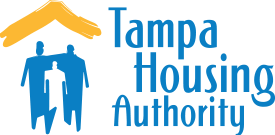Hurricane Preparedness
To create your online Family Disaster Plan, please visit FloridaDisaster.org.
What is a Hurricane?
A hurricane is a low-pressure system that generally forms in tropical waters. Hurricanes are often accompanied by powerful thunderstorms, heavy rain, strong winds, storm surge, and tornadoes. Tropical systems are classified by wind speed in the following categories:
Tropical Depression: An organized system of clouds and thunderstorms with a defined center of circulation and maximum sustained winds of 38 mph or less.
Tropical Storm: An organized system of strong thunderstorms with a defined surface circulation and maximum winds of 39-73 mph.
Hurricane: An intense tropical weather system of strong thunderstorms with a well-defined circulation and maximum sustained winds of 74 mph or greater.
The Difference Between a Watch and a Warning
Tropical Storm Watch: Tropical storm conditions (sustained winds of 39 to 73 mph) are possible in the specified coastal area within 48 hours.
Tropical Storm Warning: Tropical storm conditions (sustained winds of 39 to 73 mph) are expected somewhere in the specified coastal area within 36 hours.
Hurricane Watch: Hurricane conditions are possible within the specified coastal area, but tropical-storm-force winds may reach the coast within 48 hours.
Hurricane Warning: Hurricane conditions are expected somewhere within the specified coastal area, but tropical-storm-force winds will arrive in less than 36 hours.
Hurricane Intensity Ratings
The Saffir-Simpson Hurricane Wind Scale is used to rate a hurricane's present intensity. This scale ranges from 1 to 5 and uses wind speed to estimate potential property damage from a hurricane's landfall.
Tropical Storm (Winds 39-73 mph) Damage is minimal, but scattered trees and power lines may be damaged and brought down, resulting in some power outages.
Category 1 Hurricane (Winds 74-95 mph) Porches and awnings may be damaged. Older homes may have roof damage. There may be more substantial damage to mobile homes and minor pier and boat damage. Unprotected windows may be broken by flying debris. Large tree branches may snap, and shallow-rooted trees can be toppled. Heavy damage is possible to power lines. Low-lying coastal roads will become inundated with water.
Category 2 Hurricane (Winds 96-110 mph) Some damage to building roofs, doors, and windows with considerable damage to mobile homes. Failure of awnings and screened-in enclosures will be common. Some large trees may be blown down. Extensive power outages can be expected, as well as coastal roads cut off by water. Major damage to piers and small boats could occur.
Category 3 Hurricane (Winds 111-130 mph) Some structural damage to small homes is likely. Major damage is likely to coastal structures, with minor to moderate damage possible for inland buildings. Nearly all mobile homes and older small homes could be destroyed. There will likely be major damage to large trees, fences, and signs and extensive power loss. Serious coastal flooding is possible throughout the affected area.
Category 4 Hurricane (Winds 131-155 mph) Total destruction of mobile homes will occur along with wall and roof structure failure on most small homes. Extensive damage is likely to doors, windows, and roofing materials. Major damage or destruction of most coastal structures is possible. Severe damage will occur to inland structures, and trees, shrubs, and signs may be blown down. Power outages may last for weeks or months. Major coastal erosion and flooding are possible.
Category 5 Hurricane (Winds 156+ mph) Complete roof failure on homes and industrial buildings. Some complete building failures with the extensive shattering of windows and doors. All signage, fences, and awnings will be destroyed. Nearly all trees will be snapped or uprooted. Extensive coastal flooding and erosion will occur, and power outages may last months. Long-term water shortages are possible.



